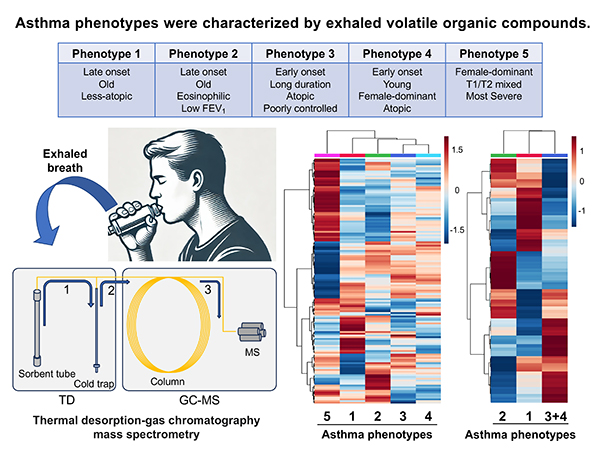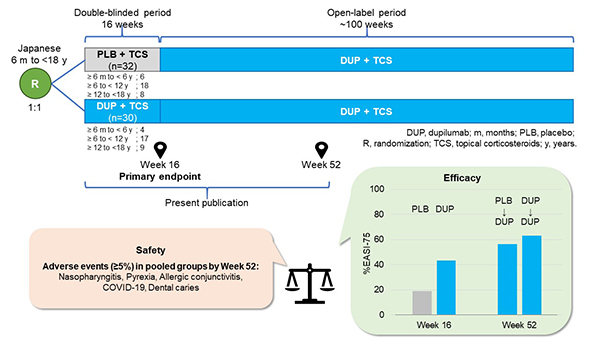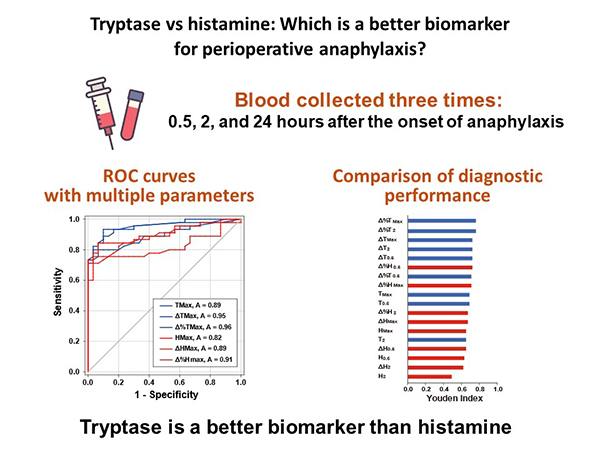Volume 73, Issue 4 (October 2024)
Editor's Choices
Editor’s comment: Asthma comprises various phenotypes that exhibit distinct clinical, demographic, and pathological traits. Identifying the profiles of exhaled volatile organic compounds (VOCs) in specific asthma phenotypes can contribute to establishing biomarkers and elucidating the underlying pathogenesis of the disease. Suzukawa et al. conducted a multicenter cross-sectional study in Japan involving patients with severe asthma, analyzing exhaled breath samples using thermal desorption gas chromatography-mass spectrometry (GC/MS). Their findings suggest that exhaled VOC profiles, a non-invasive tool obtained via GC/MS, could assist in distinguishing asthma phenotypes.
Editor’s comment: Several studies conducted in the West have demonstrated the safety and feasibility of dupilumab in children with atopic dermatitis. However, no Japanese pediatric patients were included in these studies, resulting in a lack of data on the efficacy and safety of dupilumab for this patient population in Japan. Ebisawa et al. conducted a randomized, double-blind, phase 3 study to evaluate the efficacy and safety of dupilumab in conjunction with topical corticosteroids in Japanese patients aged 6 months to under 18 years with moderate-to-severe atopic dermatitis inadequately controlled by existing therapies. Their findings revealed that dupilumab was consistently effective and well tolerated in Japanese patients within this group.
Editor’s comment: Anaphylaxis is among the most severe perioperative complications, yet diagnosing perioperative anaphylaxis (POA) often poses a challenge. While guidelines recommend measuring tryptase over histamine, supporting evidence is limited. Haraguchi et al. investigated the diagnostic performance and optimal timing of tryptase and histamine measurements for diagnosing POA, along with the relationship between Hypersensitivity Clinical Scoring Scheme (HCSS) scores and elevated biomarkers. They discovered that the best diagnostic performance was achieved by measuring the percentage change in the higher tryptase value at either 30 minutes or 2 hours after the onset of anaphylaxis, compared to baseline. However, neither tryptase nor histamine levels were found to correlate with HCSS scores.





